Ceres is a dwarf planet, and the only who isn’t located in the Kuiper Belt but rather in the inner solar system in the asteroid belt between the orbits of Mars and Jupiter. Discovered in 1801, it was considered a planet for a year, and then an asteroid, the first of its kind until 2006, when it was classified as of dwarf planet being the smallest of them.
Key Facts & Summary
- Ceres is the first dwarf planet to receive a visit from a spacecraft.
- It is the only dwarf planet located in the inner solar system.
- It does not have any moons or rings, and scientist believe that it also lacks a magnetosphere.
- It was first considered a planet, then it was demoted to asteroid, the first of its kind, and then it was classified as a dwarf planet.
- From 1802 to 2006 it was considered the largest asteroid in the Solar System.
- It was discovered in 1801 by Italian astronomer Giuseppe Piazzi, who also gave it its name Ceres Ferdinandea.
- The name was changed to Ceres, the roman goddess of agriculture.
- Unlike other asteroids, Ceres is round because it is large enough for gravity to mold its shape into a sphere.
- Its composition lends itself to the formation of life as we know it. Its prospects for life are positive.
In the search of a star, the Italian astronomer Giuseppe Piazzi stumbled in 1801 upon what he believed to be a comet. Later, with the help of another astronomer it was concluded that they found a new planet.
Piazzi decided to name it Ceres Ferdinandea. Soon, more and more similar objects were discovered in 1850 that then led to its classification as an asteroid, the first object to be termed so. The name then changed to Ceres after the roman goddess of harvest and motherly love.
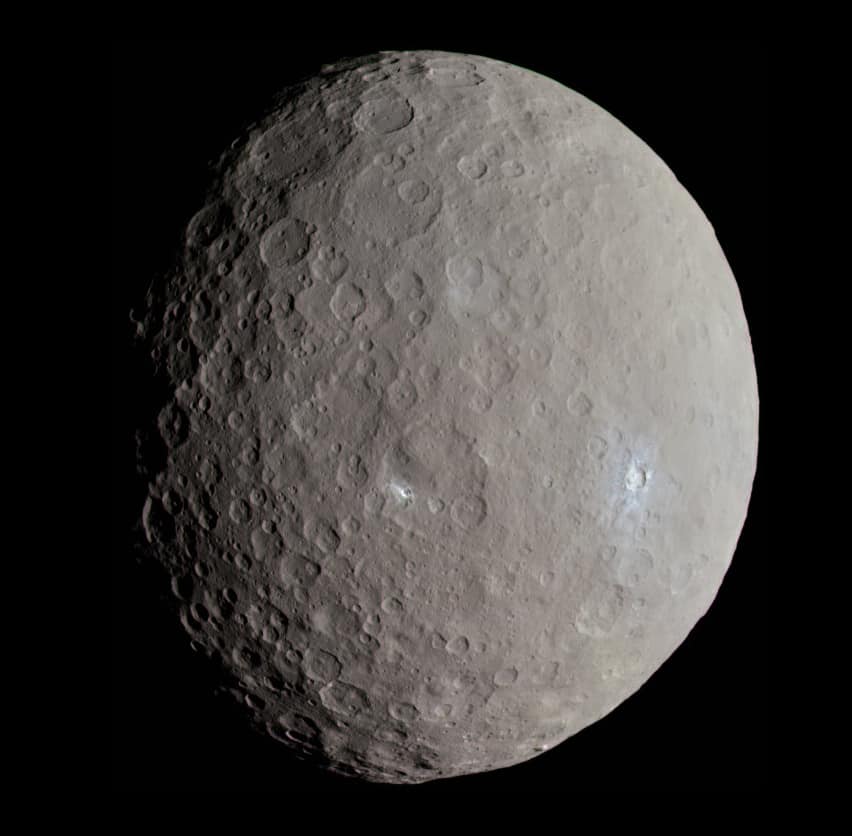
Distance, Formation and Size
Located in the asteroid belt between Mars and Jupiter, Ceres encompasses one-third of all the mass found in the asteroid belt. Its size would later grant it the status of a dwarf planet, in 2006.
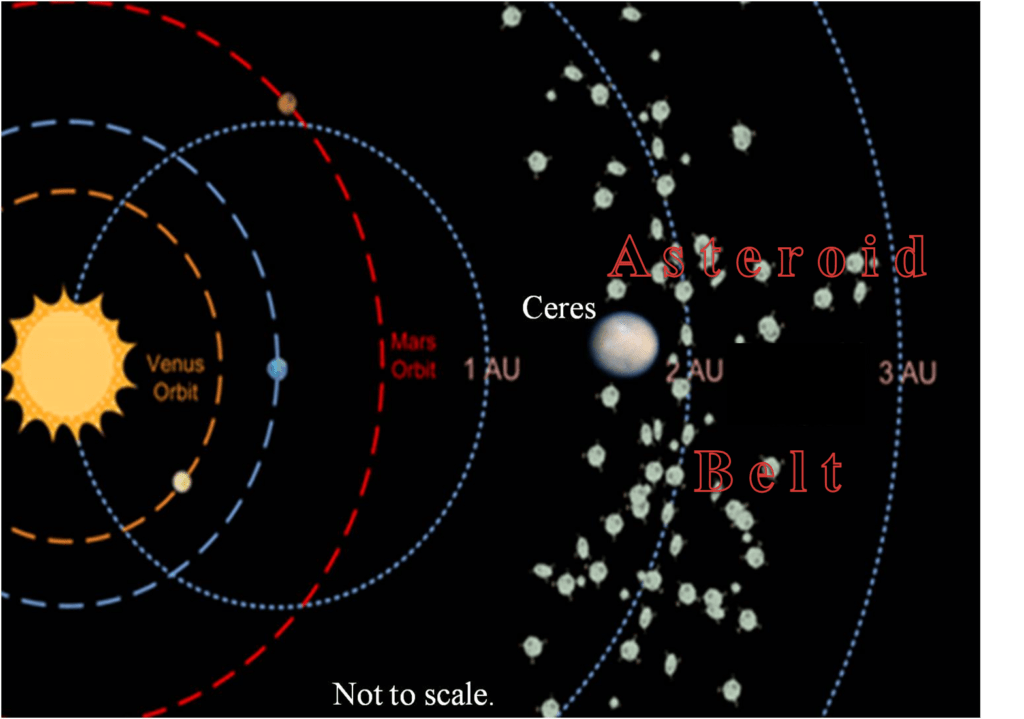
It is located just under 2.8 Astronomical Units away from the Sun and thus it receives its light in about 22 minutes, and is approximately 3.5 Astronomical Units away from Earth, light thus takes 29 minutes to arrive to us from Ceres. It is the 33th largest body in the Solar System within Neptune’s orbit.
Ceres is believed to have been formed around 4.5 billion years ago when the Solar System was forming. Gravity pulled swirling gas and dust and it resulted in the creation of the small dwarf planet. Ceres is described by scientists as an embryonic planet or proto planet, meaning that it started to form as a planet but failed to finish. The failure was guaranteed by Neptune’s strong gravity which prevented Ceres from becoming a fully formed planet.
Ceres settled into its current location among the rest of the leftover pieces of planetary formation. Another theory of its origin states that Ceres was actually formed within the Kuiper Belt before migrating closer to the Sun via various large gravitational influences.
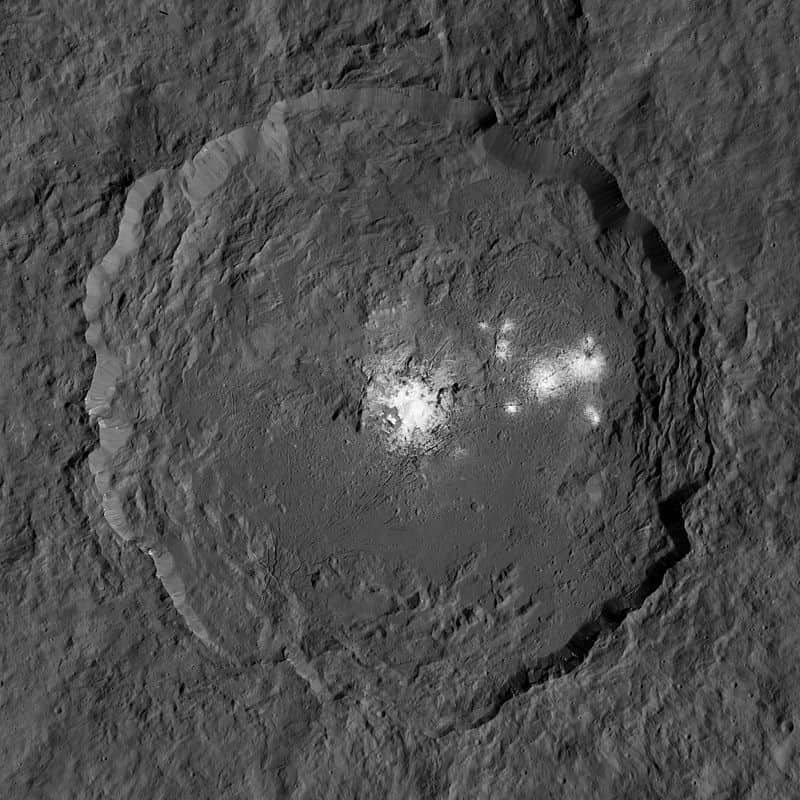
This theory holds some weight due to the presence of ammonia salts detected in Ceres’s Occator crater. Also Ceres’s believed formation under colder conditions than most planets and asteroids lends some credibility to this theory, meaning that the dwarf planet was formed beyond Jupiter’s orbit.
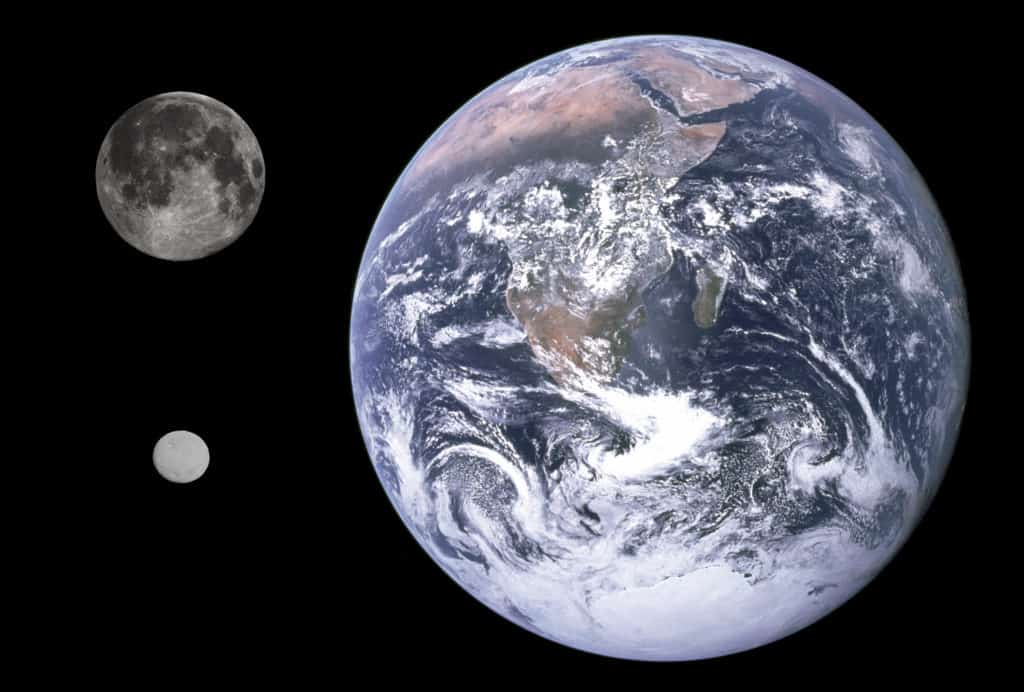
Ceres has the radius of 476 kilometers or 296 miles. Thus Ceres is 1/13 the radius of Earth or 27% that of the Moon. The diameter of Ceres is estimated to be about 945 kilometers, meaning that Ceres is a comparative size to the top to bottom length of the United Kingdom.
Orbit and Rotation
It follows an orbit between Mars and Jupiter, within the asteroid belt and closer to the orbit of Mars. The orbit is moderately inclined, (i = 10.6° compared to 7° for Mercury and 17° for Pluto) and moderately eccentric (e = 0.08 compared to 0.09 for Mars).
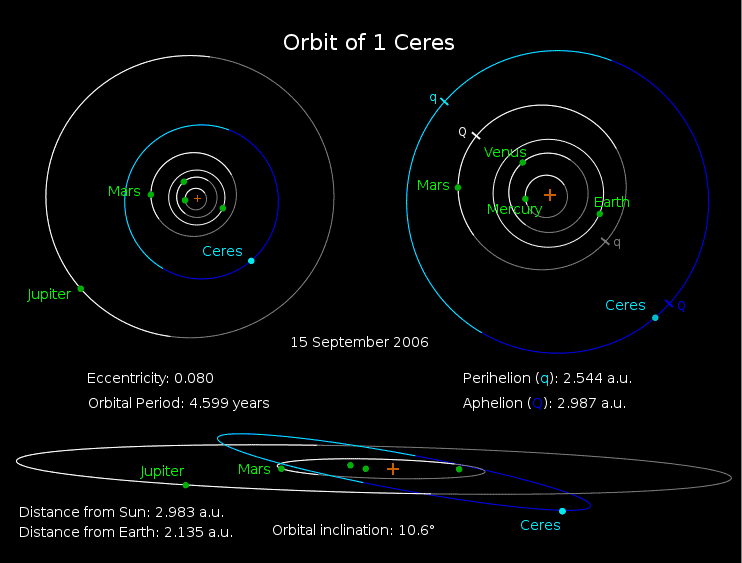
It takes about 4.6 Earth years for Ceres to make one trip around the sun or approximately 1,681 Earth days. As Ceres orbits the sun, it completes one rotation every 9 hours, thus its day length, which is one of the shortest in the solar system.
Geology and Atmosphere
Ceres is covered in countless small, young craters, no larger than 280 kilometers or 175 miles in diameter. The dwarf planet is made up mostly from ice and rock, with a rocky interior and an icy exterior.
On the surface, ice mixes with various minerals, iron rich clay can also be found on the surface. The surface is relatively warm for an asteroid, the average surface temperature is about 235 degrees Kelvin or minus 36 degrees Fahrenheit or minus 38 degrees Celsius.
In January 2014, water vapor was detected in several regions, and thus it was discovered that water vapor comprises more of Ceres’s external makeup than it was previously believed. It has been determined that this could be the result of outgassing or from a unique type of volcano called a cryovolcano.
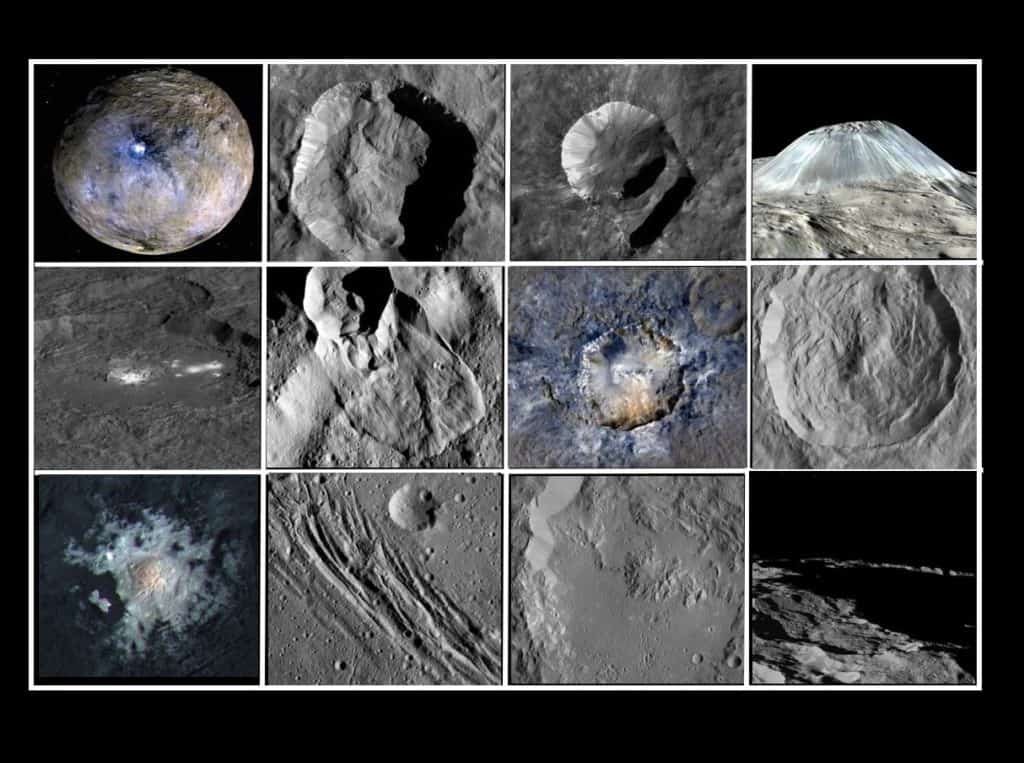
The outgassing is a common feature of a comet. Internally, Ceres’s mantle which is about 100 kilometers thick could contain up to 200 million cubic kilometers of water, which is more than all the fresh water on Earth.
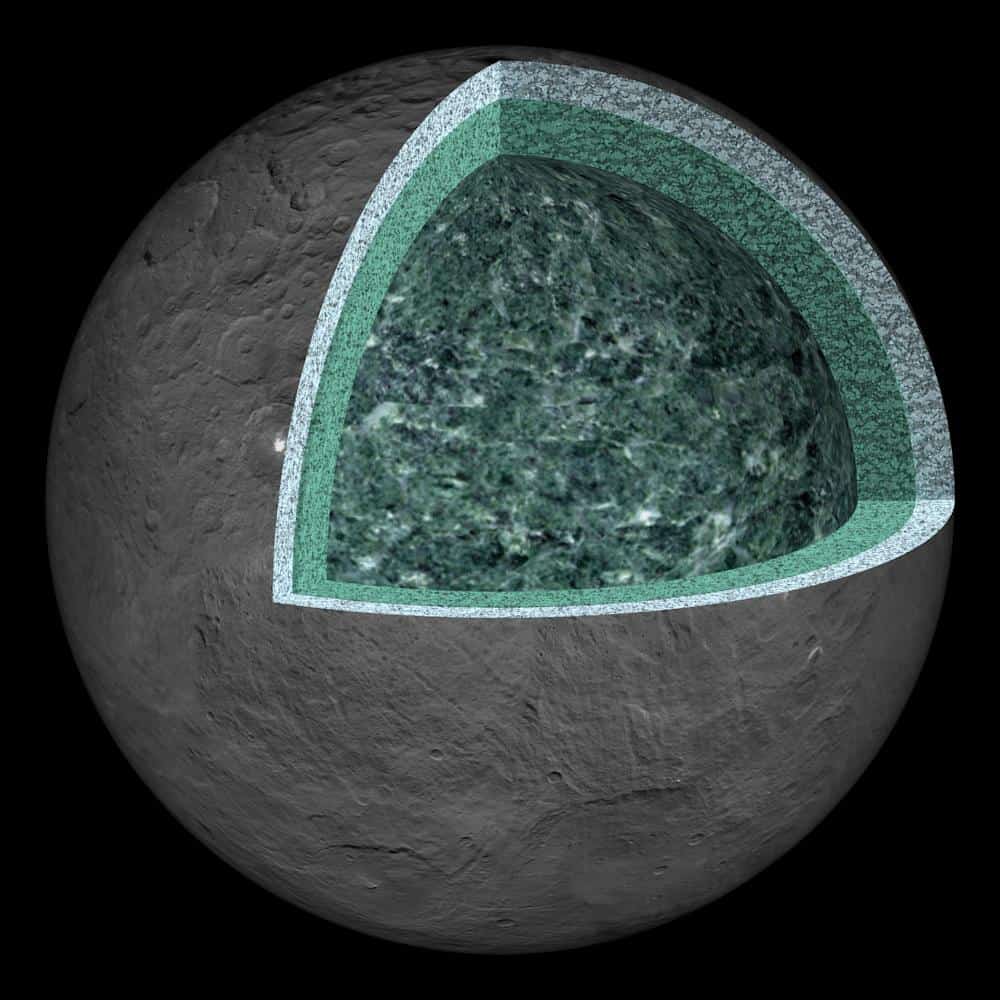
Life habitability
Its composition lends itself to the formation of life as we know it. Its prospects for life are positive and as such it has gathered our attention for further observations. In 2017 organic molecules were discovered on Ceres, the carbon-containing building blocks of life. These organics more importantly, appear to be native, likely forming on Ceres rather than arriving via asteroid or comet strikes.
Scientists were pleased with this discovery. However something a bit more well-known brings the discussion of life to the table, the famous bright spots that are seemingly a unique feature of Ceres. A year after detecting water vapor, NASA’s Dawn spacecraft went to observe Ceres and entered its orbit in 2015.
This was when the cratered surface of Ceres was discovered and two very distinct bright spots were observed leading to the speculation about a possible cryovolcanic origin which is a volcano that erupts volatiles such as water, ammonia or methane. In 2016, scientists from the Dawn team claimed in a science paper that a massive cryovolcano called Ahuna Mons is the strongest evidence yet, for the mysterious formations.
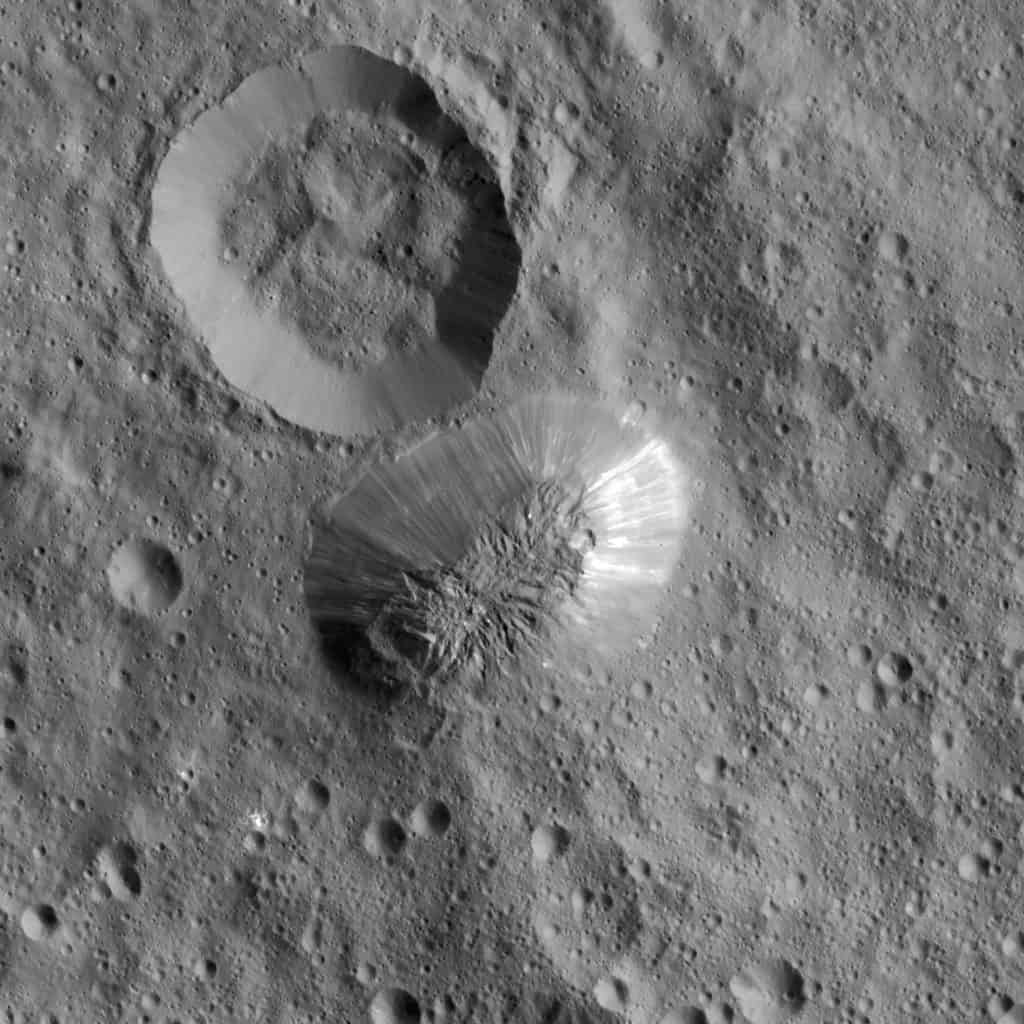
Later in 2016, Dawn found definite evidence of water molecules on the surface of Ceres. These factors coupled with Ceres’s 20% carbon mass could provide the right conditions for organic chemistry.
Future plans for Ceres
“Because Occator Crater holds some tantalizing clues about the conditions necessary for life to arise on other worlds, scientists are hoping to send a lander to further explore Ceres' most fascinating feature”, scientist Paul Schenk declared.
Dawn could only study Ceres from orbit, reaching a closest altitude of 22 miles (35 km), a spacecraft on the surface however, could learn more about the dwarf planet's composition by scooping a sample and analyzing it in situ, or inside the spacecraft itself. Currently though, no space agencies have plans to send another mission to Ceres, but that could change now that the Dawn mission has ended.
Did you know?
- Between 2013 and 2100, the closest approach of Ceres to Earth is speculated to happen in 2032 at a distance of approximately 1.6 Astrological Units.
- Piazzi originally wanted to name Ceres, Cerere Ferdinandae. The reason for this was because he wanted to honor the roman goddess of agriculture, Cerere in Italian, who was believed to have originated in Sicily, the oldest temple of her being there. The second term Ferdinandae, was to honor the then king of Sicily, Ferdinand.
- Ferdinandae however, was not acceptable to other nations, and it was thus dropped. Ceres remained, but for a short time in Germany it was called Hera, in modern Greek Demeter, while the other languages used a variation of Ceres/Cerere with the exception of Chinese which use the calque “grain-god (dess) star” or gushenxing.
- The word cereal comes from the same name of Ceres.
- The rare-earth element Cerium was named after Ceres but it was later renamed to palladium after the second asteroid Pallas.
- Ceres remained classified as a planet in astronomy books for half a century.
- Ceres holds the title of the smallest dwarf planet in our Solar System, however recent discoveries imply that there may be a new dwarf planet even smaller named Hygiea. Hygiea was discovered in 1849 and classified as an asteroid. But recent observations may reveal that it is in fact a dwarf planet.
- Ceres is the only known dwarf planet that isn’t located in the Kuiper Belt.
Bibliography:
- Asteroid (1) Ceres – Summary". AstDyS-2, Asteroids – Dynamic Site. Retrieved 15 October 2019.
- Landau, Elizabeth; Brown, Dwayne (6 March 2015). "NASA Spacecraft Becomes First to Orbit a Dwarf Planet". Jet Propulsion Laboratory. Retrieved 6 March 2015.
- O'Neill, I. (25 February 2015). "Ceres' Mystery Bright Dots May Have Volcanic Origin". Discovery Inc. Retrieved 1 March 2015.
- Schmadel, Lutz (2003). Dictionary of minor planet names (5th ed.). Germany: Springer. p. 15
- Landau, Elizabeth; McCartney, Gretchen (24 July 2018). "What Looks Like Ceres on Earth?". NASA. Retrieved 25 July 2018.
- Lewin, Sarah (29 June 2016). "Mistaken Identity: Ceres Mysterious Bright Spots Aren't Epsom Salt After All". Space.com. Retrieved 30 June 2016.
- "Ceres: The tiny world where volcanoes erupt ice". SpaceDaily. 5 September 2016.
- Dwarf Planet 1 Ceres Information". TheSkyLive.com. Retrieved 26 November2017.
Image source:
- https://upload.wikimedia.org/wikipedia/commons/7/76/Ceres_-_RC3_-_Haulani_Crater_%2822381131691%29_%28cropped%29.jpg
- http://1.bp.blogspot.com/_Gb2sUbezHOU/THtn-B3beFI/AAAAAAAABY4/jFcZqeP77i0/s1600/ab.png
- https://en.wikipedia.org/wiki/Occator_(crater)#/media/File:PIA20350_crop_-_Occator_from_LAMO.jpg
- https://upload.wikimedia.org/wikipedia/commons/1/12/Ceres%2C_Earth_%26_Moon_size_comparison.jpg
- https://upload.wikimedia.org/wikipedia/commons/thumb/a/a4/Ceres_Orbit.svg/742px-Ceres_Orbit.svg.png
- https://upload.wikimedia.org/wikipedia/commons/0/0f/PIA22090-Ceres-DwarfPlanet-NotableFeatures-20180117.jpg
- https://upload.wikimedia.org/wikipedia/commons/1/11/PIA22660-Ceres-DwarfPlanet-Inside-ArtistConcept-20180814.jpg
- https://upload.wikimedia.org/wikipedia/commons/2/22/PIA20348_crop_-_Ceres%27_Ahuna_Mons_top_view.jpg
